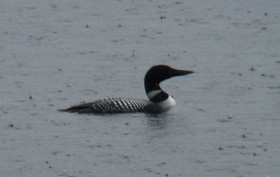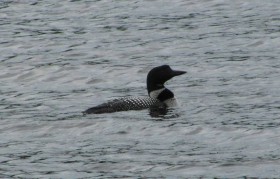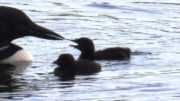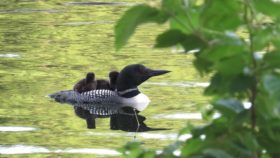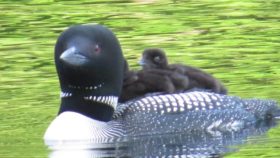may be found all over Maine in its lakes and ponds. In winter they move closer to the coast where they fish in the ocean and bays. Loons dive to great depths and swim long distances under water to avoid humans and predators. Some have been found tangled in nets 200 feet below the surface. In 2013 “An Act to protect Maine’s Loons by Banning Lead Sinkers and Jigs” became law.
At 28 to 36 inches, loons are the size of a goose but are more adapted to swimming than walking. On land they push with their legs and slide on their breasts.
Loons’ jet black heads and bills make them difficult to observe when partially submerged in shaded or dark areas. When fully afloat, their white checkered backs are clearly visible.
These birds are, of course, well-known for their “looney” shrill, human-like calls. It is a sound that often signals the end of a day of camping and canoeing near wooded lakes. At Pierce Pond the loons entertain hikers on the Appalachian Trail where a lean-to shelter faces the pond.
There are five types of loons in North America and the Common Loon, pictured here, is the most numerous and widespread among their species. These interesting birds have learned to tolerate humans with their cottages along lakes and ponds. Dana Mather has been patiently observing these creatures at Woodbury Pond in Litchfield. Here he has captured some of their family activities.



